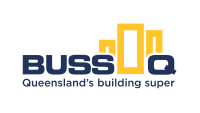Menu
- Membership
-
Services & advice
- Building, planning & development
- Contracts & disputes
- Employment & wages
-
Health, safety & environment
-
Common hazards
- 10 critical risk events and controls
- Asbestos
- Bullying & harassment
- Chemicals
- Confined spaces
- Electricity
- Excavation
- Falling objects
- Fatigue
- Heat-induced illness
- Heights
- Manual tasks
- Mobile plant
- Noise
- Psychosocial Hazards at Work
- Power tools
- Severe weather
- Silica
- Site security
- Sun & ultraviolet rays
- Storage & housekeeping
- Underground & overhead services
- Health & Safety Representatives (HSRs)
- Incident management
- Mental Health
- Risk management
- Safety documents & signage
- Safety health checks
- WHS self assessment tool
- COVID-19
-
Common hazards
- Laws, codes & regulations
- Licensing
- Members Legal
- Products
- Training
- What's on
- News & publications
- Homeowners
- About
- Contact
- Terms & conditions
Asbestos is a naturally occurring, fibrous silicate material that was widely used in building products between the 1940s and late 1980s. It was used in everything from fibro sheeting, guttering and downpipes, roofing sheets and electrical switchboards to insulation material, carpet underlays and telecommunication pits due to its durability, fire resistance and insulating properties.
There are two types of asbestos; non-friable asbestos and friable asbestos. Non-friable asbestos is the most common type of asbestos containing material (ACM) and it's usually bonded with materials like cement, for example fibre cement sheeting such as eaves or wall boards. Friable asbestos is commonly found in fire-proofing or acoustic insulation materials and is more likely to become airborne if disturbed.
Asbestos is highly hazardous if fibres become airborne when working with non-friable materials or disturbing friable asbestos. This is because the fibres can accumulate in a person's lungs and sometimes lead to asbestosis, mesothelioma and lung cancer – which can all be fatal. Due to the significant risks posed by exposure to asbestos fibres, disturbing and/or removing asbestos containing materials is heavily regulated.
Planning and risk assessment
Testing and identification
The first step in managing the risk of exposure to asbestos is identifying whether it's present in the workplace.
If a building was constructed prior to 1990, you can reasonably assume it will contain some asbestos materials. From December 2003, there was a total ban on the manufacture and use of all asbestos and asbestos containing materials, including knowingly importing products containing asbestos.
If the material needs to be removed or you can’t be certain whether it's asbestos, use the services of a National Association of Testing Authorities (NATA) accredited laboratory to test a sample of the material.
Licences and training
Specific licences and training are required for asbestos removal:
- Licence Class A – Friable asbestos removal
- Licence Class B – Non-friable asbestos removal.
A licence isn't required to remove non-friable asbestos material of less than 10-square-metres. However, workers must still be sufficiently informed and trained in asbestos identification, safe handling and controls measures when performing any asbestos removal work. Asbestos material of greater than 10-square-metres, must always be removed by a licenced asbestos remover.
Master Builders offers training courses in the removal of non-friable asbestos. Find out more about our Awareness Asbestos course and the Asbestos Worker Program.
ASBESTOS AWARENESS COURSE ASBESTOS WORKER PROGRAM
Using the right tools
When removing asbestos, specific tools and equipment are prohibited from use as they can generate dust and liberate asbestos fibres into the air. The tools and equipment include:
- Power tools such as drills, grinders, sanders and saws
- Brooms and brushes
- High-pressure water cleaners
- Compressed air.
Health monitoring
It is necessary to monitor the health of any workers performing licensed asbestos removal.
Workers undertaking non-licensed asbestos removal work may also require health monitoring if there's risk of exposure or they're regularly performing that type of work.
Read about health monitoring on the Work Health & Safety Queensland website.
Control measures
Determining what control measures to use depends on the type of work being carried out, what type of asbestos exists and how much asbestos exists.
The legislation and codes of practice are very specific about the way asbestos should be handled and we recommend you follow them closely to avoid exposure to harmful asbestos dust.
Need more information?
If you haven’t found the answer to your questions on our website, give us a call or email us.





